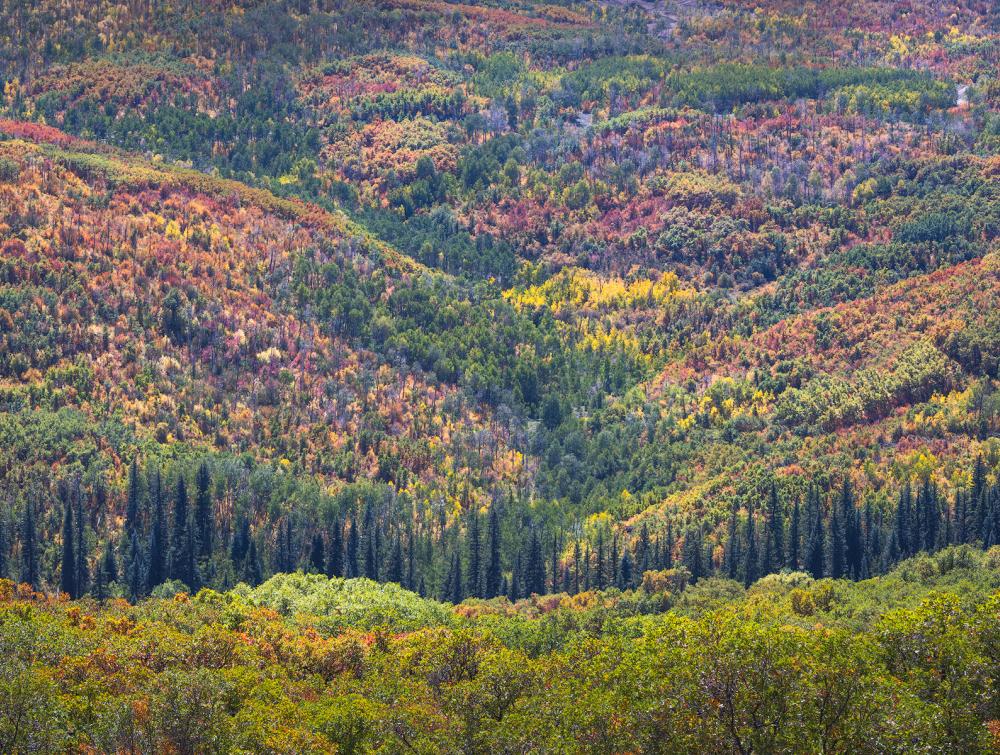Administration relaxes rules for oil and gas drilling in National Forests

North Fork Valley, CO
Mason Cummings, The Wilderness Society
Proposed rule cuts the public out of oil and gas leasing decisions for National Forests
WASHINGTON, September 1, 2020 ------ The administration has released its plan to make it easier for companies to drill for oil and gas on U.S. Forest Service lands.
National forest lands serve a vital role in the climate solution by storing carbon. Under this new rule, the administration would escalate oil and gas development, increase carbon emissions and exacerbate the climate crisis, putting human as well as the forests’ health at risk at a time when public health is the nation’s top concern.
The proposed rule would cut the public out of the process used to decide whether and which lands will be opened to oil and gas drilling. It would also give excessive leeway to companies that don’t follow US Forest Service (USFS) laws and weaken that agency’s ability to protect public land from development and degradation.
By adopting this dramatic departure from its long-standing role, Forest Service would give away its right to serve as a check on leasing in those places that need protections.
“By undermining the public participation and environmental review required by the National Environmental Policy Act, this proposed rule puts the interests of the fossil fuel industry ahead of the public interest,” said Will Fadely, senior government relations representative, The Wilderness Society. “Our national forests and grasslands have never been more important for preserving and passing a healthy world forward to future generations.”
“National forests are treasured by the American people for their recreation, watershed and wildlife values,” said Pete Nelson, federal lands director for Defenders of Wildlife. “Accelerating oil and gas drilling on national forests will hasten the extinction and climate crises at a time when we need to be moving in the exact opposite direction.”
“The administration really outdid itself with a proposal that has the Forest Service walking away from its responsibilities for managing our national forests and grassland while closing the door on public oversight,” said Nada Culver, vice president of public lands and senior counsel for the National Audubon Society. “This is not just a conservation issue, it’s putting our communities at risk. Replacing forested areas and grasslands with drill pads and access roads not only means fewer birds like mallards and prairie warblers, but also degrades our lands and natural spaces, and threatens water supplies for millions of people.”
“Tens of millions of Americans hike, camp, fish, hunt, bike, and run in our national forests each year,” said Sharon Buccino, senior director of lands for the Nature Program at NRDC (Natural Resources Defense Council). “This rule would sideline their voices in favor of the fossil fuel industry. We won’t allow the Trump administration to shut down public review of drilling in our national forests that the American people don’t want and that the climate can’t afford.”
Specifically, the rule would:
- Reduce public input and transparency by removing the requirement that a Forest Service office give public notice of the decision to approve a Surface Use Plan of Operations, the specific plan for development.
- Allow the Forest Service to skip important and necessary environmental reviews for leasing decisions. This, together with other administration roll backs of NEPA regulations, undermines that law’s role in good forest management.
- Make it more difficult for the Forest Service to stop bad lease sales by removing explicit confirmation of USFS consent as a standard step in the leasing process.
- Remove environmental considerations as criteria for decisions to approve plans.
- Loosen the rules by giving developers unbounded discretion to extend deadlines and comply with operating standards. Currently, compliance deadlines can only be extended if the operator cannot meet them due to factors out of their control.
- Limit the Forest Service to only protect specific, named natural resources and ignore opportunities to address climate change or protect vital wild places.
By filtering air and water, lands managed by the USFS provide clean drinking water and clean air for millions of people and serve an essential role in tackling the climate and the extinction crises. Currently, if US public lands and waters were constituted a country, they would rank as the fifth largest source of greenhouse gas emissions in the world, ahead of Japan, Brazil and Germany.
Map Resources
https://www.wilderness.org/articles/media-resources/maps-national-forests-risk-oil-and-gas-drilling
Contacts:
William Fadely, Wilderness Society, Senior Government Relations Representative, 202 429-2661, william_fadely@tws.org.
Michael Reinemer, Wilderness Society, Deputy Director of Strategic Communications, Michael_reinemer@tws.org, 202-429-3949
